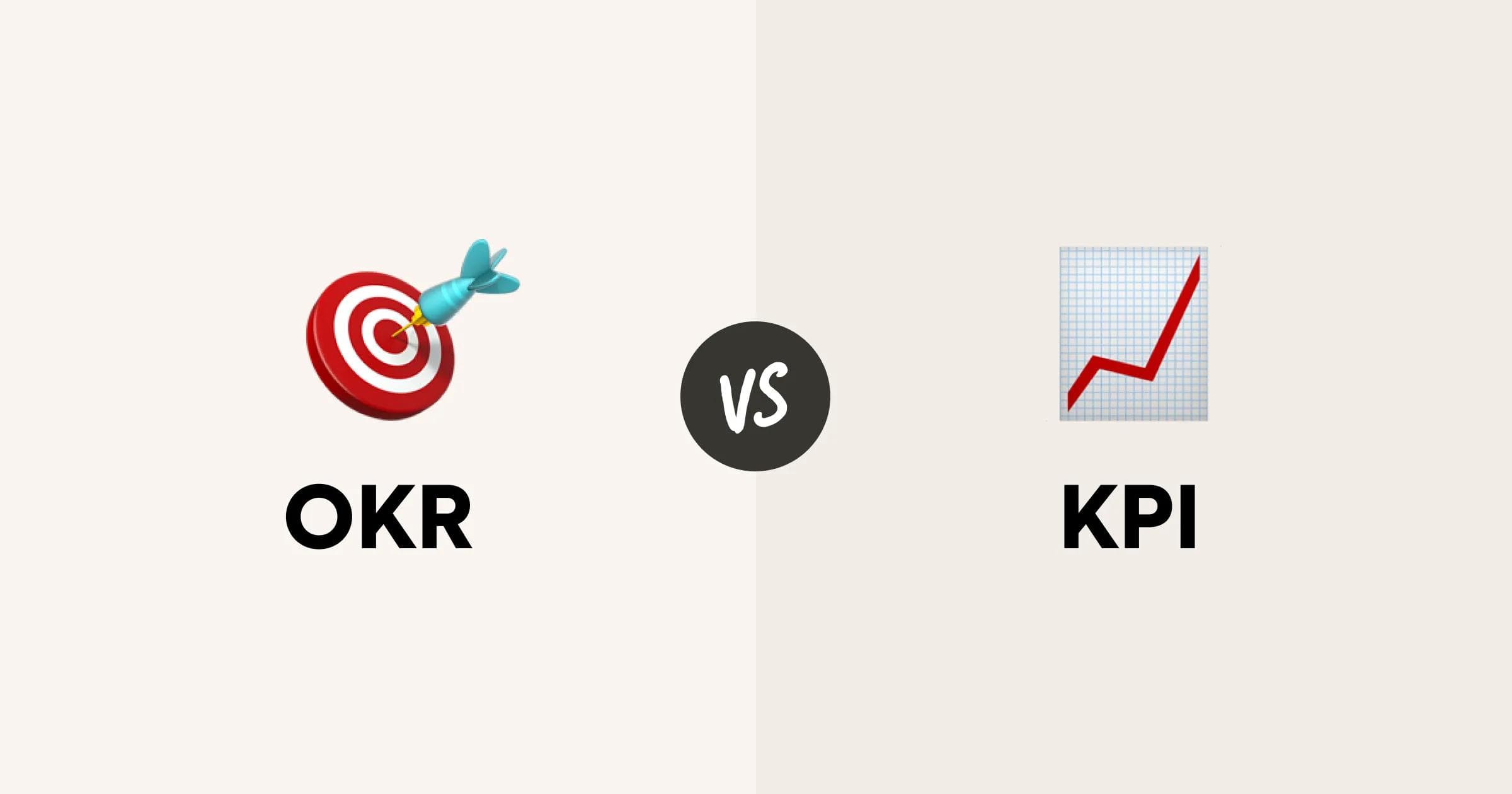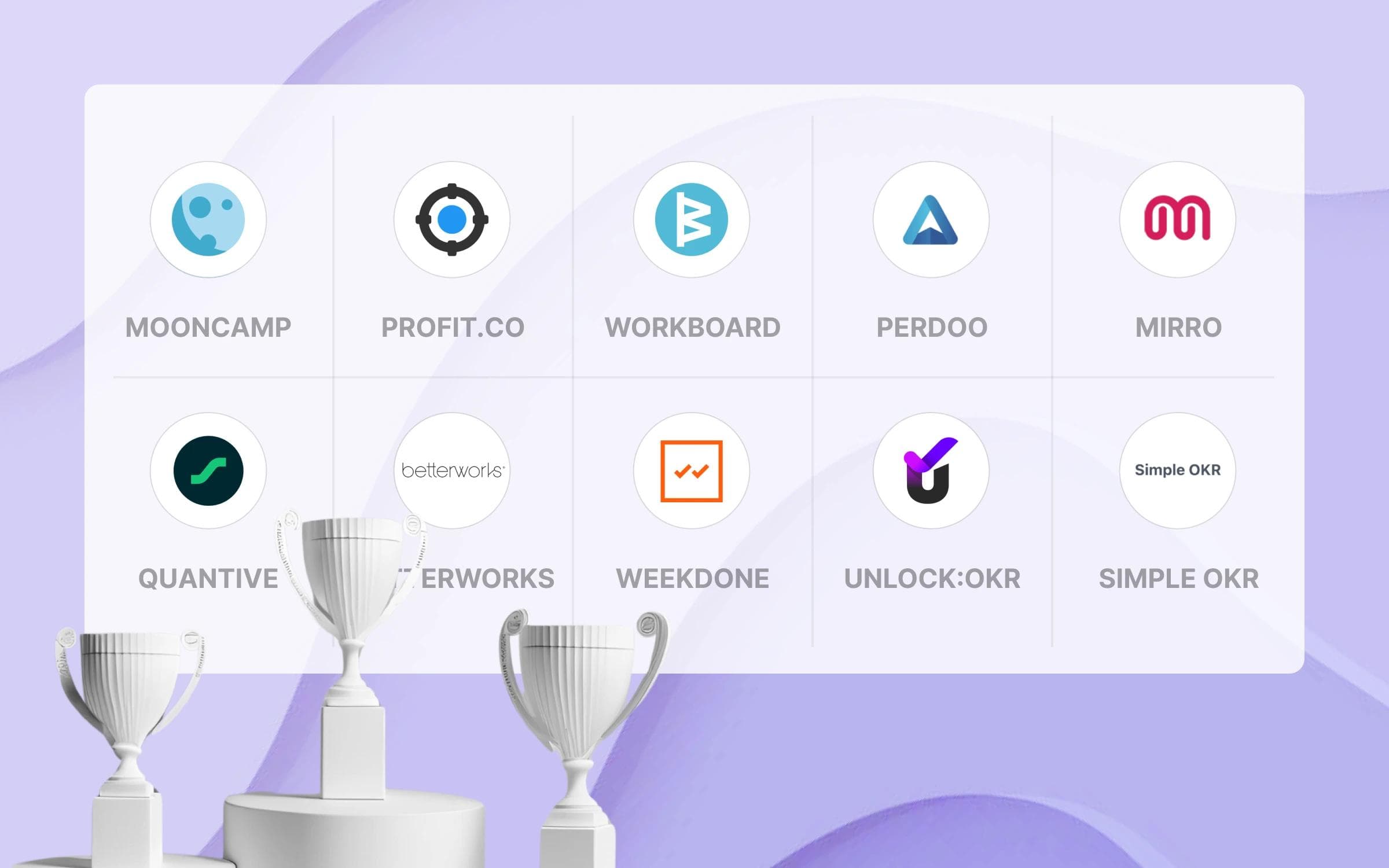How do OKR and Agile (and Scrum) fit together? Especially when introducing OKRs or integrating OKRs and Scrum, it is often not entirely clear to employees how the two agile methods are to be classified and how they interact with each other.
This article aims to provide clarity around OKR and Agile, addressing the following questions:
- How it all began: What is the waterfall model?
- What is Agile?
- What is Scrum?
- What are OKRs?
- Is OKR a part of Agile?
- How do OKRs contribute to Agile?
- What is the difference between Agile, OKRs and Scrum?
- What is the relationship between OKRs and Scrum?
- Can OKRs and Scrum work together? If yes, how?
The reason for the confusion is usually that Agile is considered to be the same as Agile Software Development, which in many cases is synonymous with the Scrum framework. However, this is not quite correct.
To approach the concepts of OKR and Agile, it's helpful to understand why Agile came into being in the first place and what has dominated most of the working world up to this point: The Waterfall Model.
What is the waterfall model?
The waterfall model describes a linear process model in project management (mainly in software development) and is characterized by the fact that development processes are divided into successive project phases.
The next phase may only be initiated when the previous phase has been completed according to pre-defined, measurable criteria or milestones.
The most common waterfall variants include these five phases:
- Planning: Requirements analysis and specification
- Design: System design and specification
- Development
- Testing
- Deployment and maintenance
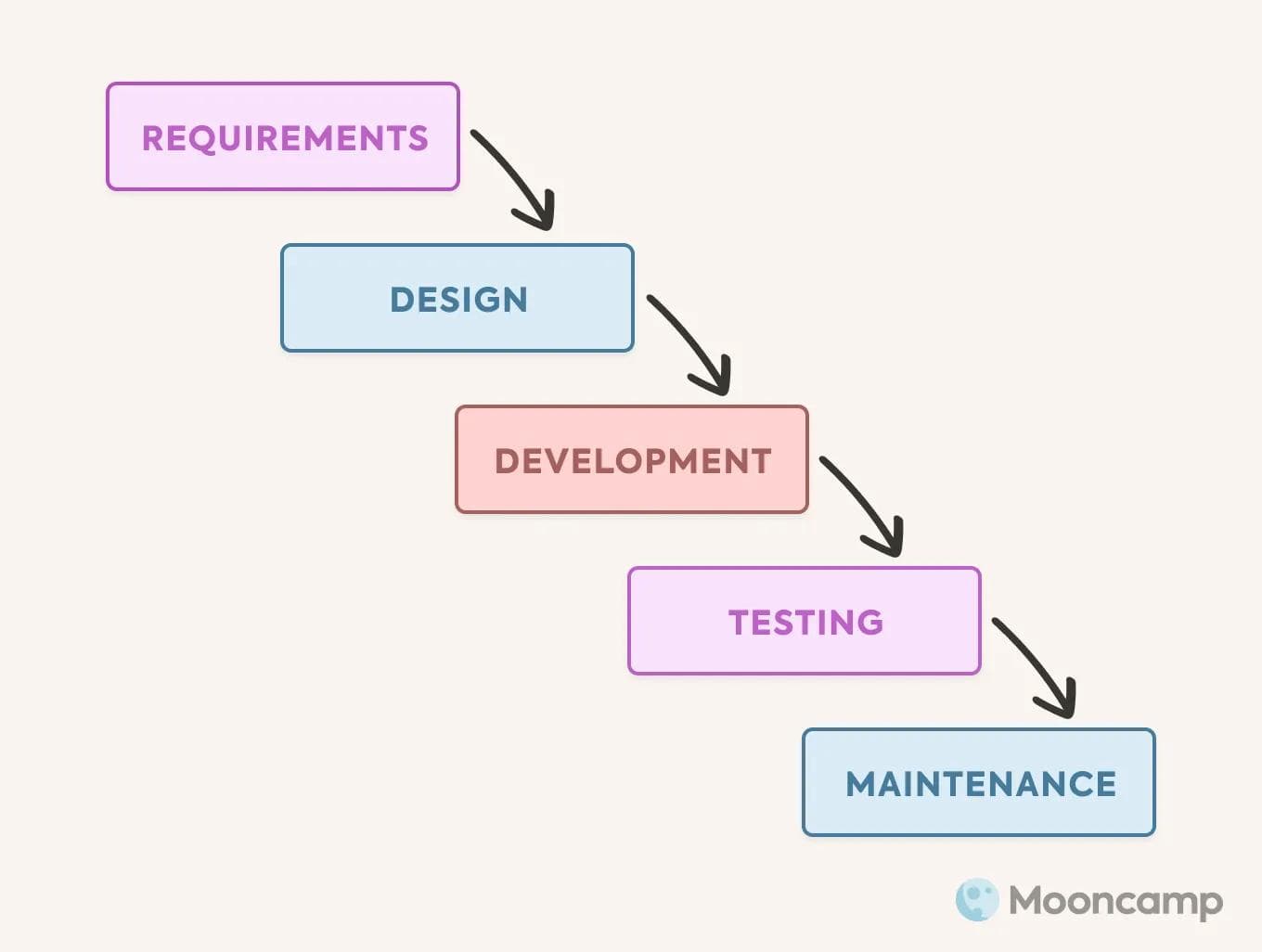
This way of operating leads to very rigid processes and goals that prevent agility from happening in the first place. This type of workflow made perfect sense in the 70s, when the model was created, as economic relationships were still much more clearly interconnected and the external environment was easier to predict.
Today, however, the interconnections are often too complex to rely on the static structure of the waterfall model. In fact, the waterfall mindset is based on four major misconceptions:
- We are able to foresee all steps of the plan in advance and in detail
- Most of our plan will turn out to be correct
- The market environment will not change or will change very little
- Changes will be minimal; a bi-annual review will be sufficient to respond to any changes that may occur
As a consequence, the static nature of the waterfall model has largely become obsolete in an increasingly complex business world. New mindsets and methodologies such as "Agile", "Scrum" or "OKRs" provide modern and more appropriate answers to the new challenges of our world and the needs of the working population.
What is Agile?
The term "agile" was coined by three scientists at Lehigh University in Bethlehem. According to them, agility refers to a special mindset in the management of an organization that aims to be particularly anticipatory, flexible and proactive in everyday work.
These agility characteristics are preceded by the idea that "traditionally" organized companies tend to work in a process- or project-oriented manner. The strict hierarchy resulting from this can have an increasingly obstructive and paralyzing effect in the modern, unsteady reality of the market.
In order to be distinguishable from classic organizational cultures, six dimensions are identified that must be present within an organization for it to be considered "agile".
These dimensions are as follows:
- Agile vision and mission
- Customer-centric organizational structure
- Iterative process landscapes
- Employee-centric understanding of leadership
- Agile personnel and management tools
- Agile organizational culture
The term "agility" was popularized in particular by the publication of the Agile Manifesto in 2001. The approaches formulated here were based on Agile, but explicitly deal with the development of software. These approaches later gave rise to "Scrum".
What is Scrum?

Scrum is a project management framework that links various events (meetings), artifacts (e.g., backlog), and roles (responsibilities) by means of specific rules to enable agile working in software development.
The term "Scrum" originally comes from sports and describes the Scrum during a game on a rugby field.
The American software developer Ken Schwaber was instrumental in the first formalization of Scrum in 1993 and wrote at the time: "Scrum accepts that the development process cannot be predicted. The product is the best possible software considering cost, functionality, time, and quality."
Scrum is mainly based on the concept of so-called "sprints":
- A sprint represents a defined unit of time during which a team dedicates itself to a specific task
- A sprint usually lasts between one week and one month. Each sprint ends with a review. This means that the Scrum team - and other important stakeholders - review the progress made at the end of a sprint. This is also where the foundations are laid for the following sprints.
- After the review, a new element is selected from the Product Backlog and a new sprint begins. The Product Backlog describes an evolving collection of all requirements for the product, which are addressed one by one.
- During the sprints, there is a Daily Scrum every day. This is where teams briefly report on their progress. The Daily Scrums should not last longer than 15 minutes.
By following these rules and through the interaction of the Scrum elements, agile working can be realized on the operational level (project and product management).
But what about the other dimensions of agility mentioned above? This is where OKRs come into play.
What are OKRs?
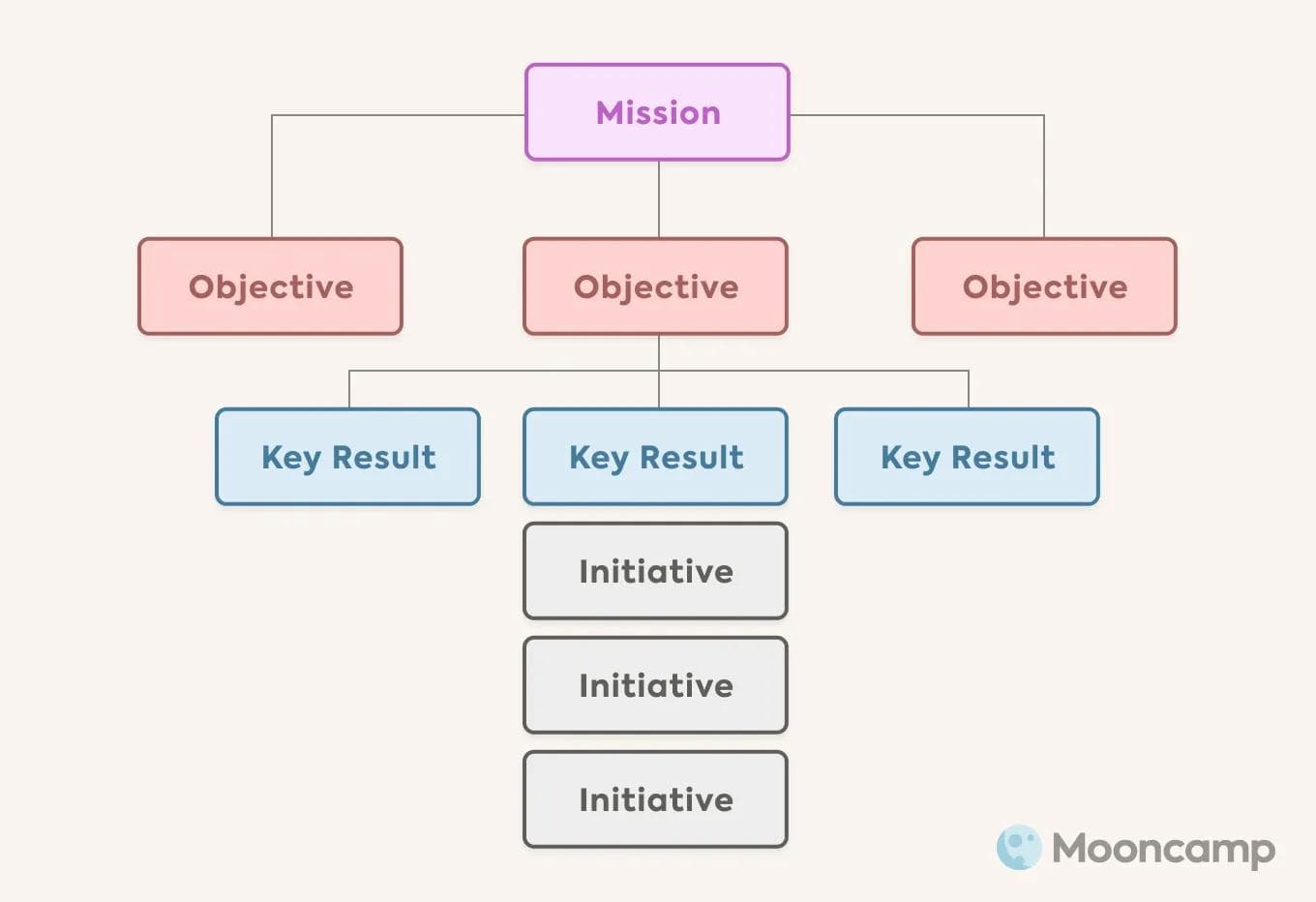
OKRs are basically the missing piece of the puzzle when a company is trying to move towards agility, but has so far only relied on Scrum. This is because Scrum is about operations, while OKRs are about strategic goal setting. However, both agile methods together are the perfect foundation to create a truly agile organization.
OKR stands for "Objectives and Key Results" and describes a management system that puts a goal-oriented, modern and flexible way of managing people at its core. Objectives are used to set goals. Objectives are qualitative, inspirational goals whose fulfillment is controlled through the measurement of key results.
After the OKR method became popular primarily in the tech scene in and outside of Silicon Valley - through companies such as LinkedIn, Spotify or Slack - it is now being successfully applied in all industries by companies of all sizes.
OKRs and Agile: How do OKRs create agility?
OKR is not an agile software development method like Scrum, but it carries the same spirit of "Agile" in itself as a concept. When the OKR method is understood and applied in an organization, it helps make the organization more agile.
There are several reasons for this:
Goals are set more frequently
Before OKRs entered the stage of goal management, it was common practice defining goals on an annual basis and evaluate them once a year. However, in the modern and fast-paced world of work, this is obviously far too sluggish a pace and slows down the responsiveness of organizations.
OKRs, on the other hand, are defined in shorter cycles (usually quarters), so that it is possible to react to external influences or internal strategic realignments at least four times during the year, which contributes to the agility of the company.
Transparency and better communication
In order for a system (in this case: a company) to effectively respond to changing environmental influences and reorganize itself, two things are necessary: All information must be available (transparency) and system elements (employees and teams) must be able to share information with each other (communication).
OKRs create transparency by making goals publicly viewable and communicated. They further create clarity around the company's mission and strategy by having all teams take a hard look at the company OKRs and align their team OKRs with them.
Collaborative events, such as OKR Plannings, Reviews, Retrospectives, and weekly OKR check-ins, also foster communication within teams and between departments, as well as shorten feedback paths.
Purpose and intrinsic motivation

Transparent communication is not of much help if, at the end of the day, everyone is running in different directions. A clear sense of purpose makes all employees pull in the same direction. The "purpose vectors" shown in the figure no longer neutralize each other, but are aligned and support each other, so that the company can move more agile and faster towards its goals.
Furthermore, the joint development of well-formulated OKRs in the teams can lead to feeling more connected to their work and to each other. Teams become more committed to the company's vision as a result of their intense engagement with the strategy, which leads to intrinsic motivation at work.
Note: If top-down delegation is used here, you lose both the benefit of meaningful purpose and intrinsic motivation.
Autonomy and self-organization
Another advantage of the OKR framework is its effect on a company's agility through more autonomy and self-organization.
Simply cascading and "passing through" company and departmental goals to lower levels of the hierarchy has a demotivating effect and, in particular, limits the ability of teams "at the bottom" of the organizational chart to act effectively. With OKRs, a shift to more self-organization is achieved through the independent development of team goals, which makes teams at every level of the hierarchy more empowered to act, more responsive and more agile, without first having to wait for a number of approvals from above. The teams closest to the market can respond directly to new developments and are not slowed down by internal approvals and bureaucracy.
Increased customer centricity: outcome, not output
Finally, OKRs have a positive impact on customer centricity, which is one of the six dimensions of agility.
Unlike Scrum, OKRs are not about creating an output, but an outcome. An outcome is characterized by its actual measurable value to the customer. An output does not necessarily have to have this value and is therefore easier to plan.
This outcome-based approach requires an in-depth engagement with customer needs and thus also the willingness of the company to open up to its external environment. Feedback processes and communication channels with customers are established, which also makes the company more agile towards the outside world.
Overview of OKR, Agile and Scrum
**Agile** | **OKR** | **Scrum** |
|---|---|---|
Collective Mindset of a company | Goal management method | Project management method |
Holistic (all-pervasive mindset) | Strategic level | Operational level (mainly software development) |
Manifests itself in organizational behaviors that are anticipatory, participative, flexible, and proactive | Agile goal management Strategic alignment Transparency Focus on what is most important Self-organization Cross-functional collaboration | Agility through adaptive planning Short communication channels Little bureaucracy due to few rules Focus on continuous improvement |
OKR and Scrum – the perfect combination for holistic agility
As already indicated, OKRs and Scrum can be used together. Very well, in fact, because when properly combined, the two frameworks become a powerful tool on the path to becoming an agile organization. There are just a few points to keep in mind.
First, everyone needs to be aware of the parameters of each framework and understand and internalize the purpose behind them. It is also advisable that those responsible for the processes (usually OKR Master and Scrum Master) sit down together to reflect on the past cycle and jointly define the goals for the next one.
The OKRs should be defined first, since they have a longer time frame (usually quarters) than the Scrum sprints. It is important that the Key Results are based on the outcome and not the output. After the OKRs have been defined, you can continue with the sprints.
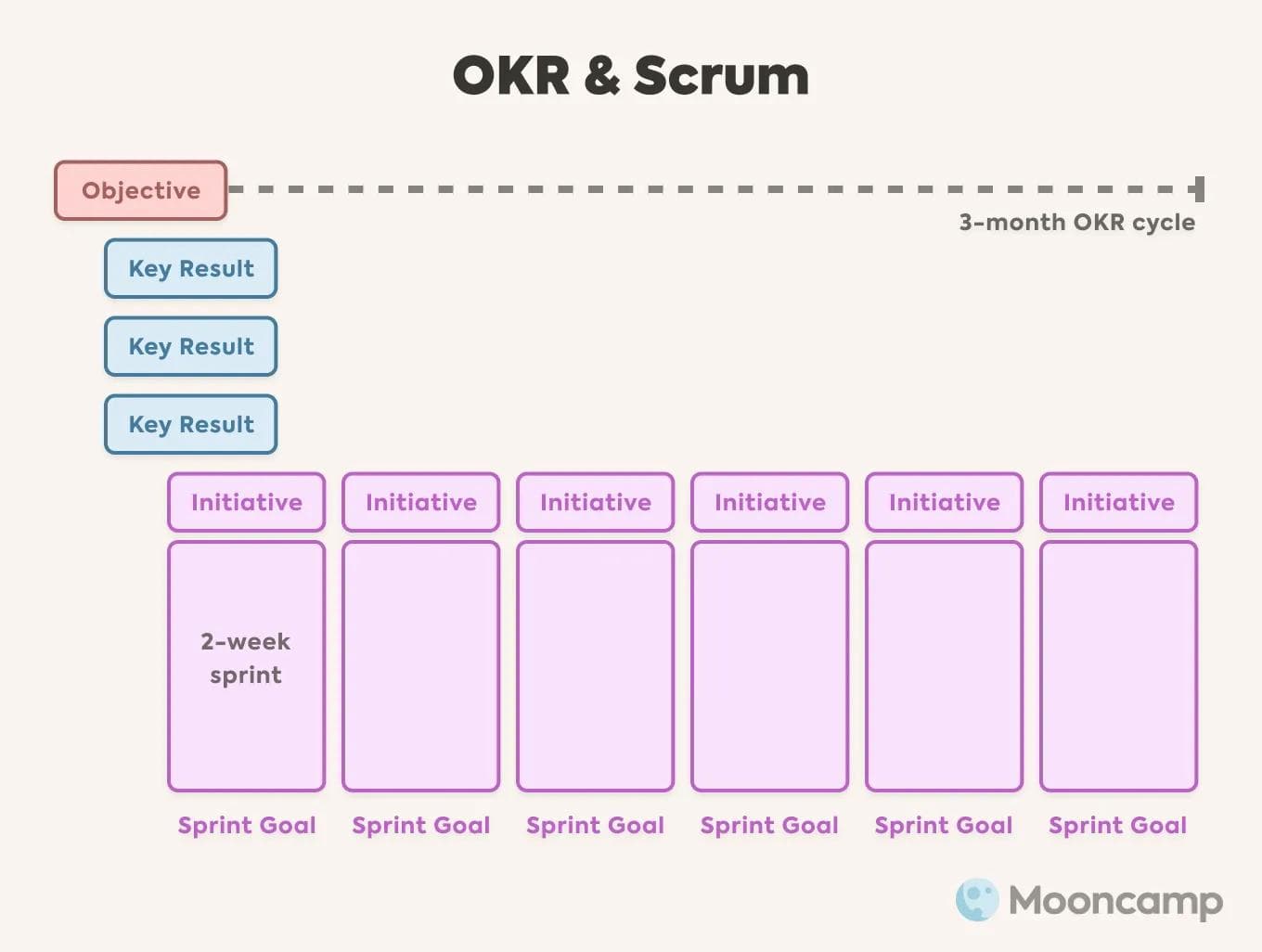
Next, you need to define what the length of the sprints should be. Basically, a two-week cycle is recommended, as this allows both frameworks to maintain their original benefits (short-term and operational - medium-term and strategic). Marrying OKR and Scrum is then done by linking sprint goals in the form of initiatives to the Key Results they pay into (see figure).
By adding Scrum to OKRs (or the other way around), the vision, strategy, and operations of a business can be mapped into one framework.
Conclusion: OKRs, Agile and Scrum
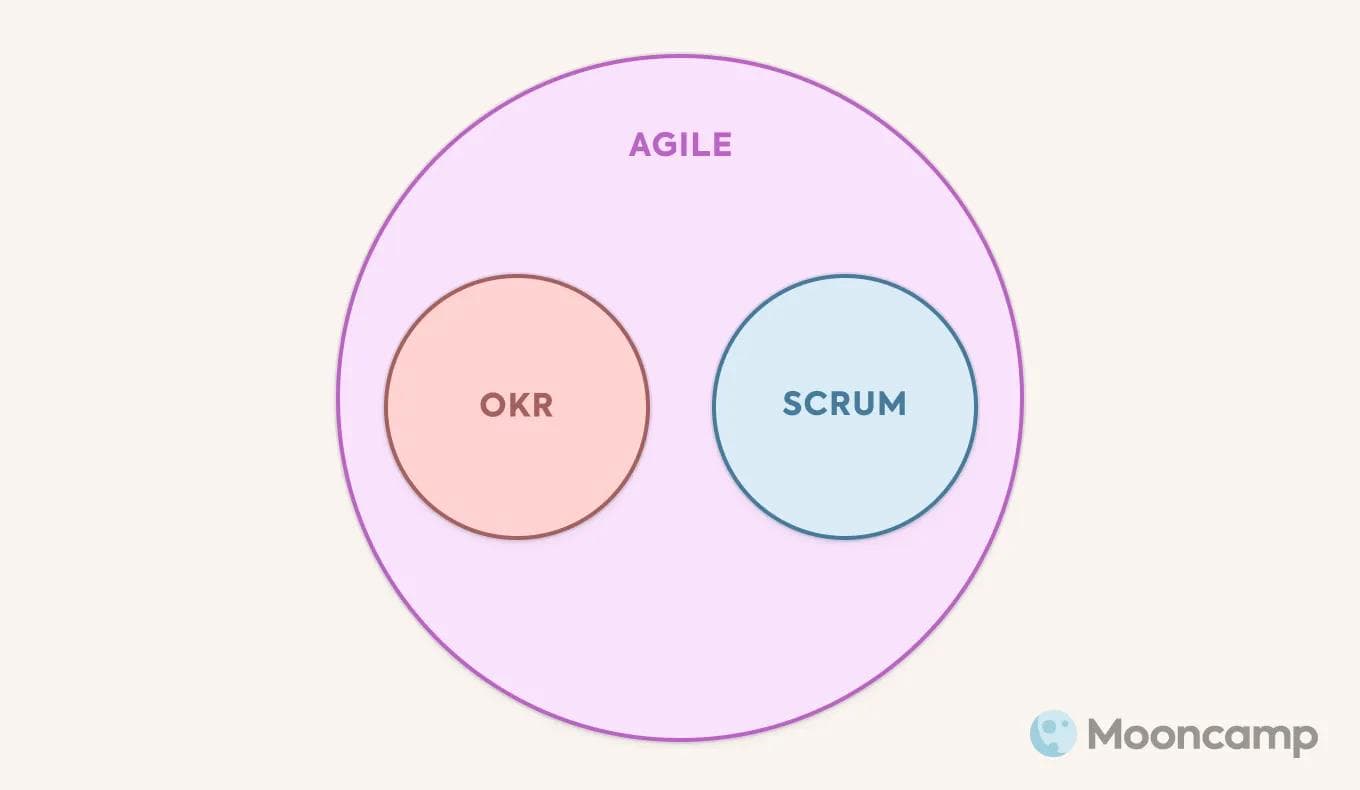
Agile is a concept or mindset that has emerged in response to an increasingly complex world that the traditional waterfall model and other management techniques can no longer cope with.
OKR is an agile goal management method, while Scrum is an agile project management method. Both find their place under the "Agile" umbrella and, when properly integrated with each other, can form a powerful framework for holistic agility.


